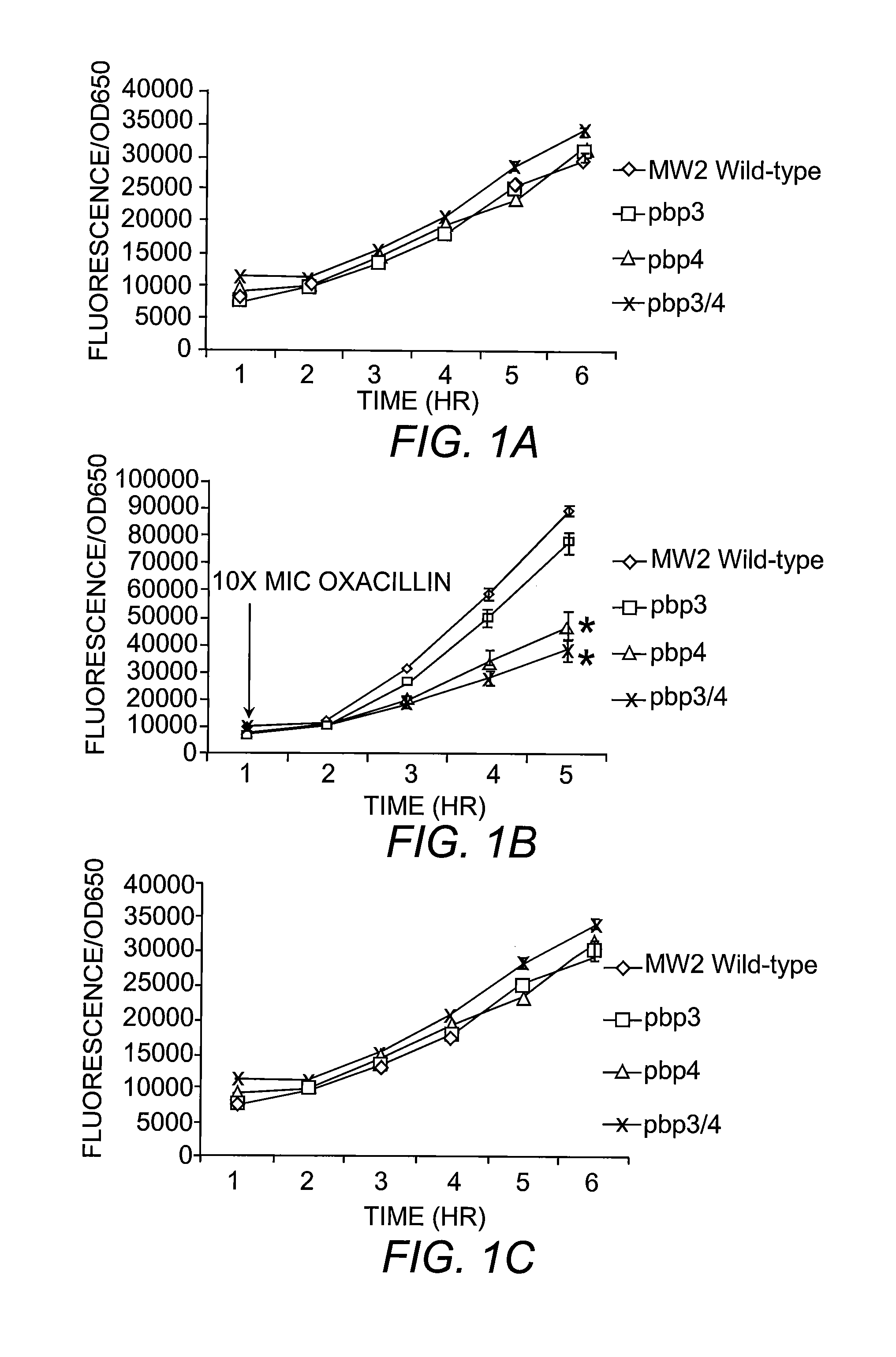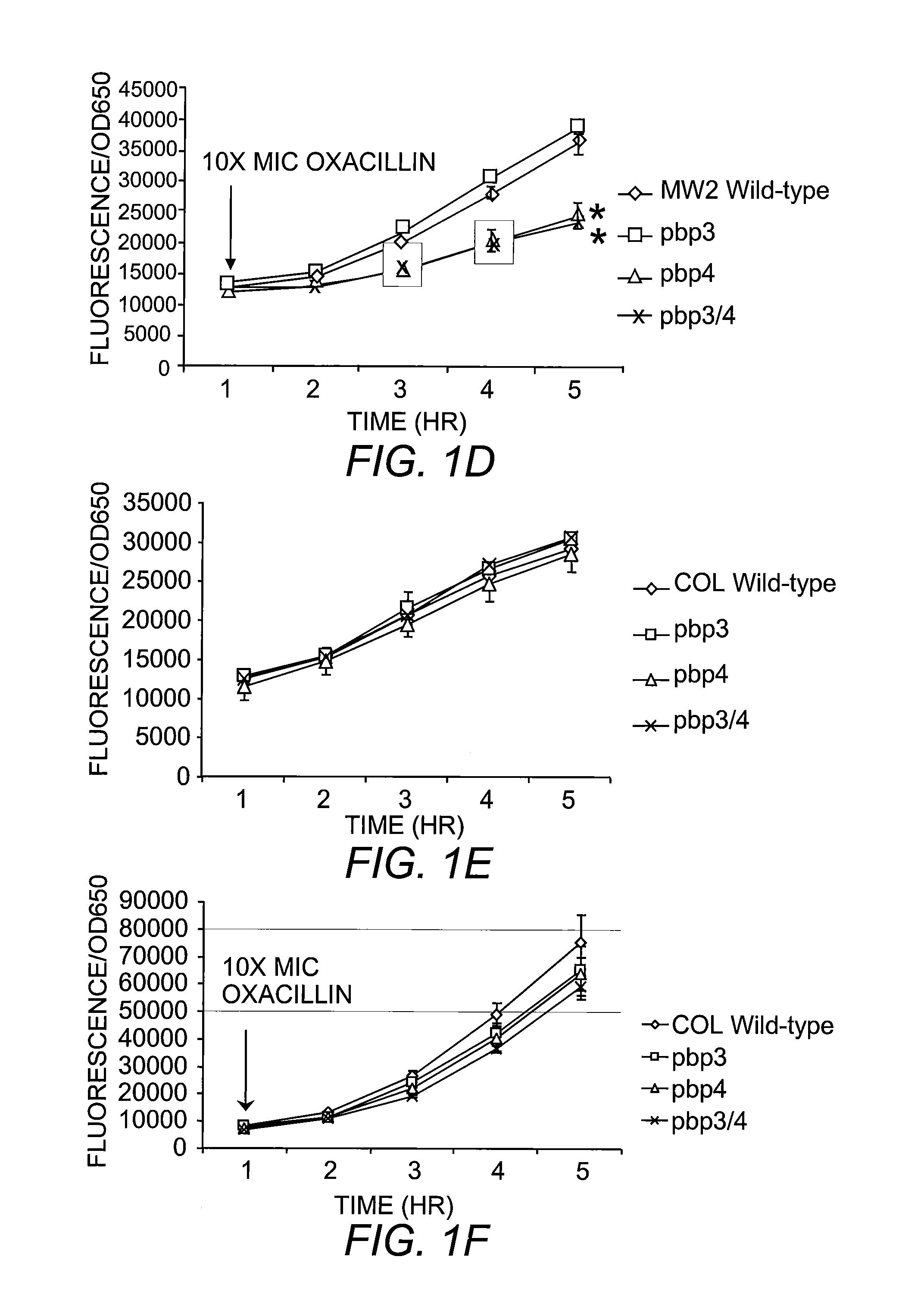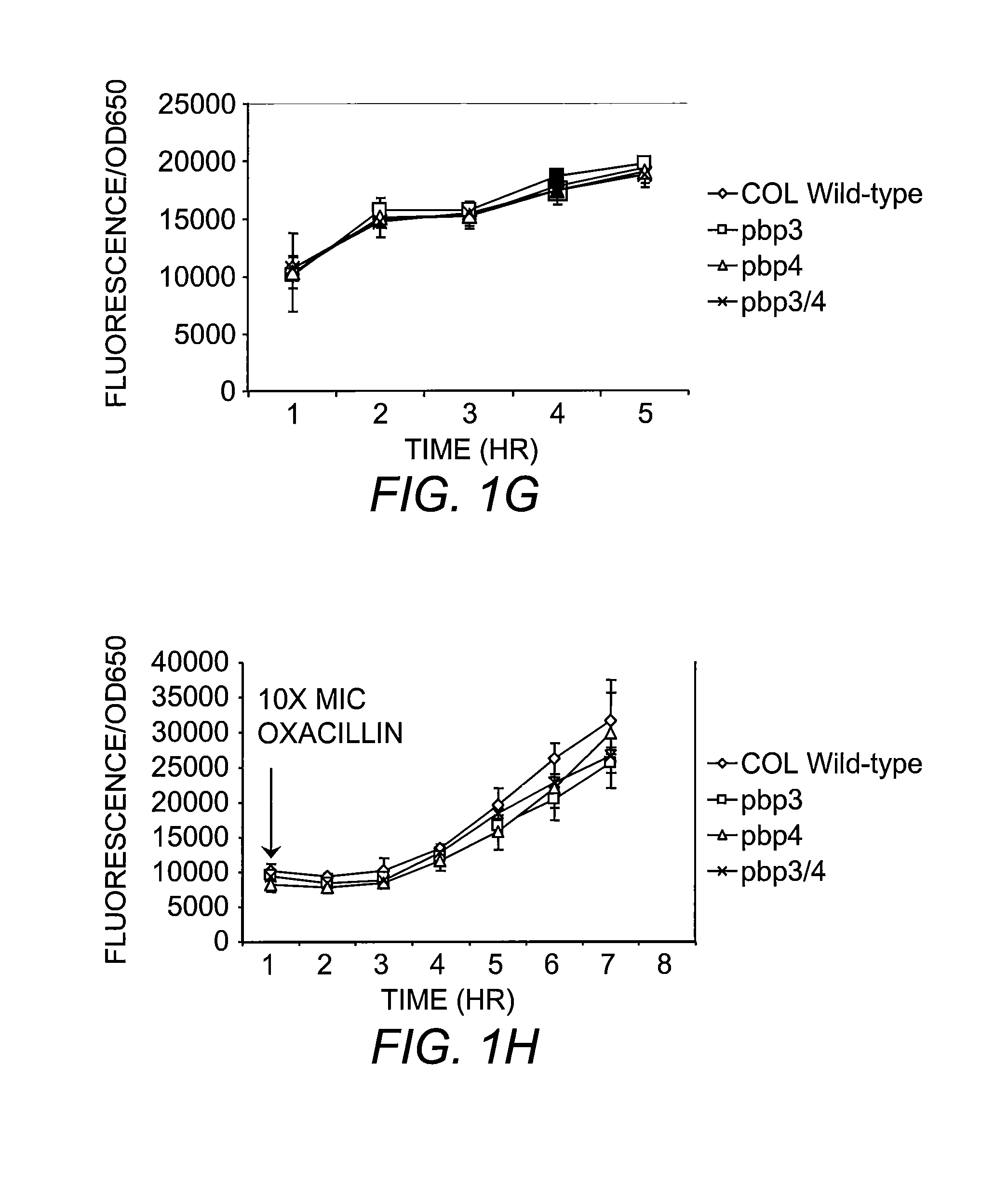Compositions and Methods for Diagnosing and Treating Community-Acquired Methicillin-Resistant Staphylococcus Aureus
a staphylococcus, community-acquired technology, applied in the direction of drug compositions, instruments, heterocyclic compound active ingredients, etc., can solve the problems of reducing the number of options, no reliable method of rapid and accurate diagnosis, and dire consequences for patients
- Summary
- Abstract
- Description
- Claims
- Application Information
AI Technical Summary
Benefits of technology
Problems solved by technology
Method used
Image
Examples
example 1
Bacterial Strains and Culture Conditions
[0057]The E. coli strain XL-1 blue was used in molecular cloning experiments. Luria-Bertani medium (Becton Dickinson) was used for culture of E. coli while S. aureus was cultured in Mueller Hinton Broth (Becton Dickinson) supplemented with 25 μg / ml Ca2+, 12.5 μg / ml Mg2+ and 2% NaCl (designated CSMHB). When appropriate, antibiotics were added to the media at the following concentrations: ampicillin at 100 μg / ml for E. coli; chloramphenicol at 10 μg / ml and erythromycin at 2.5 μg / ml for S. aureus. Chloramphenicol was routinely used to maintain selection for pEPSA5- and pSK236-based plasmids (Forsyth, et al. (2002) Mol. Microbiol. 43:1387). All antibiotics were obtained from Sigma (St. Louis, Mo.).
example 2
DNA and Computational Techniques
[0058]Plasmid DNA was isolated by standard techniques (QIAGEN, Valencia, Calif.) from E. coli and from lysostaphin digest of S. aureus. Chemically-competent E. coli or electrocompetent S. aureus was used for transformation. New England Biolab restriction endonucleases and ligases were used according to the manufacturers' recommendations. IPROOF DNA polymerase from BIO-RAD was used according to the manufacturers' recommendations to generate all DNA fragment for deletions, promoter fusions, and ectopic expressions in pEPSA5. Fidelity of all DNA sequences generated by PCR was verified using fluorescently-labeled dideoxynucleotides (BIG DYE™ terminators; PE Applied Biosystems) in DNA sequencing reactions.
example 3
Construction of S. aureus Mutants
[0059]All mutants were generated with in-frame deletion of target genes by allelic replacement, using the temperature-sensitive plasmid pMAD. Briefly, ˜0.8 kb PCR products upstream and downstream of targeted sequences were generated and ligated by gene SOEing (Horton, et al. (1990) Biotechniques 8:528). The resulting ˜1.6 kb product was digested, gel purified with QIAGEN columns, inserted into pMAD using same restrictions sites and transformed into E. coli. Colony PCR was performed on E. coli transformants and positive clones were then grown in media supplemented with antibiotic. Plasmids were isolated from E. coli, verified by digestion analysis and then used to transform S. aureus RN4220, selecting for erythromycin or chloramphenicol resistant and blue colonies at 30° C. Plasmid from 4220 was sequenced and used to transform S. aureus strains MW2, COL, USA300, N315 and Mu50 for which the gene was to be deleted. The process of allelic replacement is ...
PUM
| Property | Measurement | Unit |
|---|---|---|
| Cell angle | aaaaa | aaaaa |
| Minimum inhibitory concentration | aaaaa | aaaaa |
Abstract
Description
Claims
Application Information
 Login to View More
Login to View More - R&D
- Intellectual Property
- Life Sciences
- Materials
- Tech Scout
- Unparalleled Data Quality
- Higher Quality Content
- 60% Fewer Hallucinations
Browse by: Latest US Patents, China's latest patents, Technical Efficacy Thesaurus, Application Domain, Technology Topic, Popular Technical Reports.
© 2025 PatSnap. All rights reserved.Legal|Privacy policy|Modern Slavery Act Transparency Statement|Sitemap|About US| Contact US: help@patsnap.com



